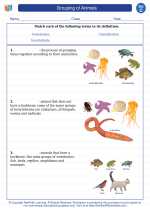Caves: Exploring Earth's Hidden Wonders
Welcome to the fascinating world of caves! Caves are natural underground voids that are typically formed in limestone, but can also be found in other types of rock. They are created through various geological processes, such as erosion, tectonic activity, and the dissolving of rock by water. Let's dive deeper into the structure, formation, and significance of caves.
Types of Caves
There are several types of caves, each with its own unique characteristics.
- Solution Caves: Formed by the dissolving of limestone or other soluble rocks by acidic groundwater.
- Sea Caves: Carved by the relentless action of waves along coastlines.
- Lava Caves: Created by the cooling and hardening of lava flows, leaving behind tunnels and chambers.
- Glacier Caves: Formed within or beneath glaciers as a result of melting ice.
Formation of Caves
Caves can form through various processes, including:
- Erosion: Water, wind, and ice can carve out caves in rock formations over long periods of time.
- Chemical Weathering: Soluble rocks, such as limestone, can be dissolved by acidic water, creating intricate cave systems.
- Lava Cooling: Lava caves are created as molten lava flows and then solidifies, leaving behind tunnels and passages.
Ecological Importance
Caves are not just geological wonders; they also play a crucial role in supporting unique ecosystems. Many caves are home to specialized species that have adapted to the dark, cool, and often humid conditions found underground. These species, known as troglobites and troglophiles, include various types of insects, bats, and blind fish.
Study Guide
Here are some key points to remember when studying caves:
- Describe the different types of caves and their formation processes.
- Explain the ecological significance of caves and the unique species that inhabit them.
- Identify the features and geological formations commonly found within caves, such as stalactites, stalagmites, and columns.
- Discuss the importance of cave conservation and the potential threats to cave ecosystems.
Now that you've gained a better understanding of caves, take some time to explore the wonders of these underground marvels!
[Caves] Related Worksheets and Study Guides:
.◂Science Worksheets and Study Guides Third Grade. Grouping of Animals
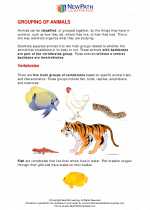
 Activity Lesson
Activity Lesson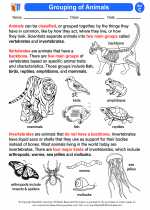
 Worksheet/Answer key
Worksheet/Answer key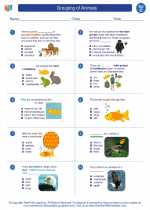
 Worksheet/Answer key
Worksheet/Answer key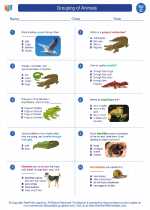
 Worksheet/Answer key
Worksheet/Answer key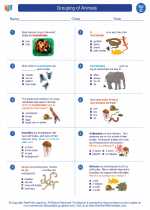
 Worksheet/Answer key
Worksheet/Answer key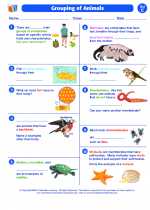
 Vocabulary/Answer key
Vocabulary/Answer key